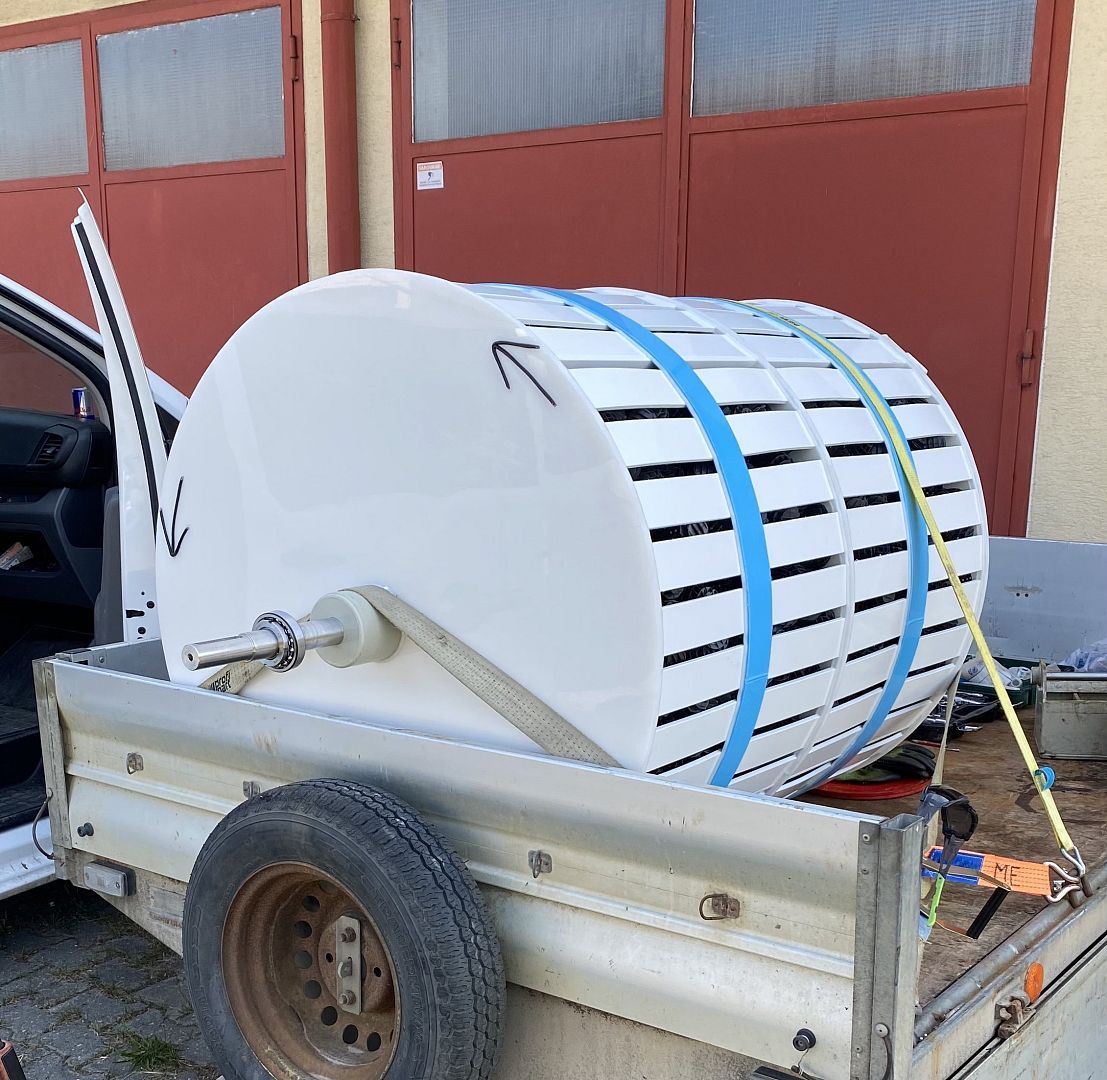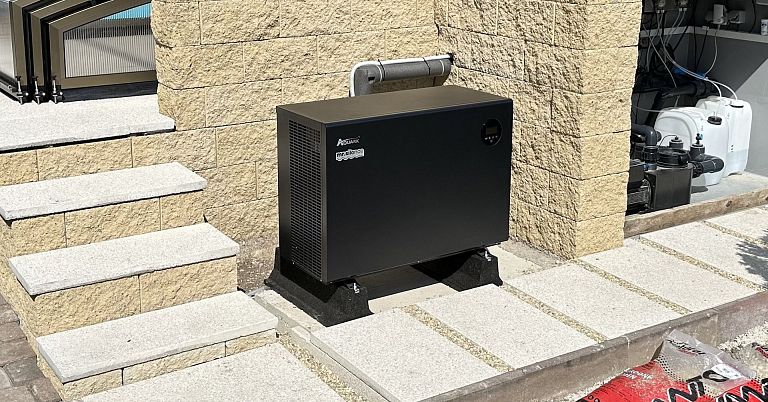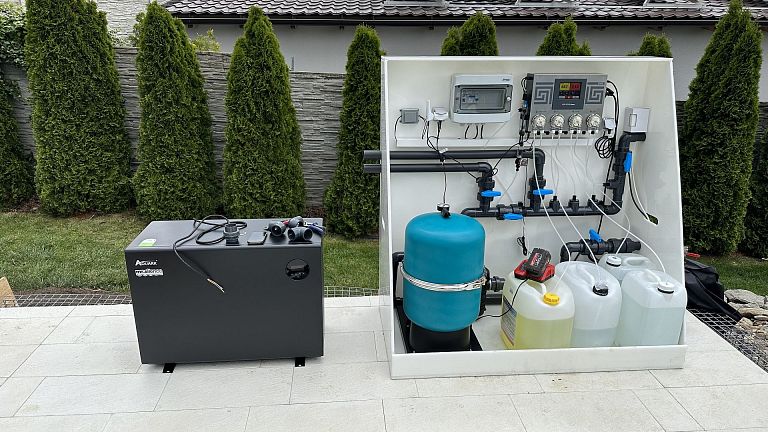It is not possible to connect to the public sewage system, you do not want to pay for the export of the cesspool, so you are thinking about buying a sewage treatment plant? In this article, we look at the issue of domestic sewage treatment plants and explain how a domestic sewage treatment plant works.
What it is and when a home sewage treatment plant is needed
A sewage treatment plant is used to treat and then dispose of wastewater. It is a great replacement for sewage pits, septic tanks or sewers. It is used in places where it is not possible to connect to the public sewerage system. Single-family houses, detached houses, apartment buildings, cottages, cabins, as well as campsites or restaurants can build their own sewage treatment plant.
What kind of sewage treatment plant do you need?
The choice of wastewater treatment plant depends on the number of people, the amount of wastewater and where you will be discharging the wastewater. A purifier can be used to treat all the water from your household. You can rely on it for sewage treatment as well as grey water treatment.
In addition to small household wastewater purifiers, we can also provide purifiers for apartment buildings, restaurants or hotels with larger capacities. We offer the necessary accessories for the wastewater treatment plants such as a biosolid filter or a sand filter for the wastewater treatment plant.
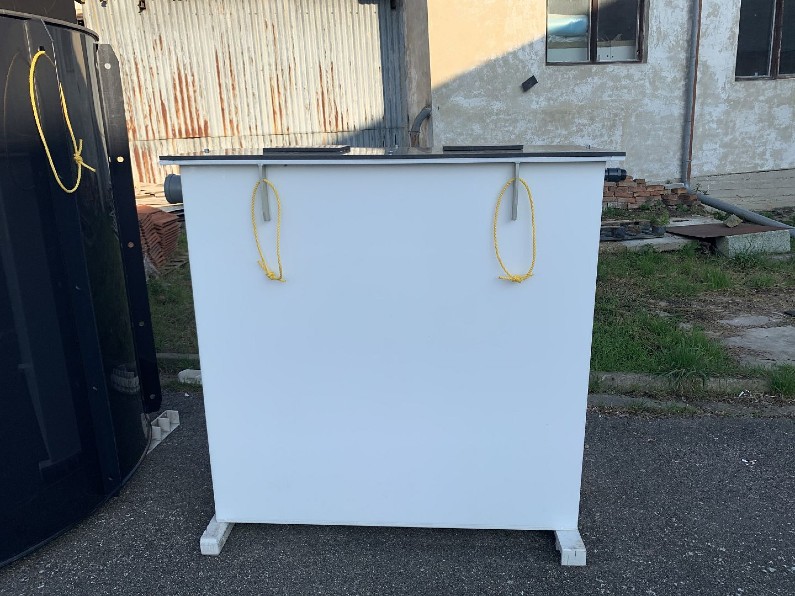
How a home sewage purifier works
We use 2 methods of wastewater treatment - anaerobic wastewater treatment for recreational properties and aerobic wastewater treatment for permanently occupied properties.
So what does the treatment process generally look like?
- Wastewater influent: Wastewater enters the wastewater treatment plant by flushing the toilet or by flushing the bathroom or kitchen waste.
- Mechanical pre-treatment: This is the first stage of the treatment process. This is the first stage of the cleaning process, which separates solid pieces of waste.
- Biological cleaning: this is followed by the work of bacteria. A blower blows air into the treatment area, which the bacteria need to break down the organic matter.
- Chemical cleaning: Additional cleaning using chemicals to remove specific pollutants.
- Sludge extraction: Sedimentation of sludge now occurs and must be removed from the clarifier 2 times/year. The sediment obtained can be deposited on the compost heap.
- Water extraction: Finally, all that is left is to pump out the excess water.
A combined approach (mechanical, biological and chemical treatment) ensures that the treated water meets the required standards for discharge or reuse. Does your wastewater treatment plant have an inappropriate gradient for pumping water? Then we have a pumped sewage sump with its own pump for you. Perfect for basements, garages or underground car parks where you can also use an oil separator.
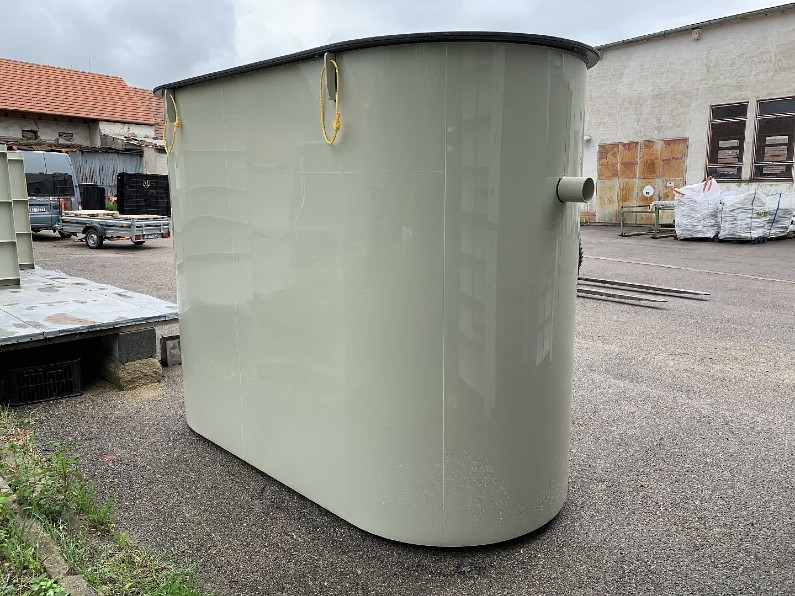
How three-chamber wastewater treatment plants work
Domestic wastewater treatment plants are usually configured as single chamber or triple chamber plants depending on the requirements and needs of the client. We normally set up our wastewater treatment plants as three chamber plants which include sludge separation, biological treatment and post-treatment. Due to the more complex treatment system, they achieve higher treatment efficiency and are suitable for more populated buildings. The EKOL 0.4K (DČB 4K), EKOL 0.5 (DČB 5), EKOL 0.5K (DČB 5K), EKOL 2.5, EKOL 4, EKOL 6, EKOL 9, EKOL 12, EKOL 15 operate on the principle of three-chamber treatment.
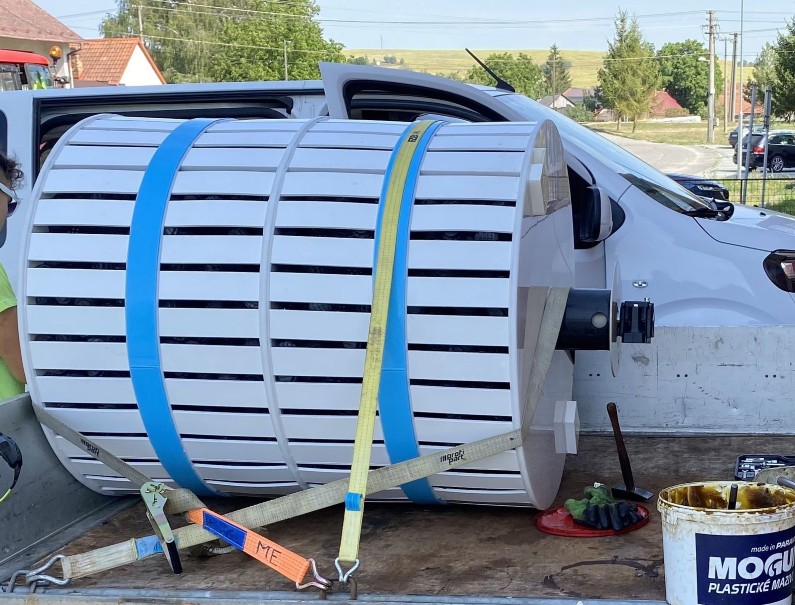
How does the system work?
- First chamber (mechanical pre-treatment): used to separate coarse impurities and heavy particles. Here, solids settle and fats and oils are separated.
- Second chamber (biological cleaning): In this part, biological cleaning is carried out by micro-organisms. The micro-organisms break down the organic substances present in the wastewater.
- Third chamber (finishing treatment): Here, finishing treatment and sedimentation of fine sludge takes place. The treated water is then ready for discharge or further use.
Advantages of three-chamber systems:
- Higher treatment efficiency due to the multi-stage process.
- Better separation and decomposition of organic matter.
- Greater capacity for wastewater treatment.
How single chamber wastewater treatment plants work
In our EKOL range of wastewater treatment plants, the EKOL 1 type is configured as a single chamber system. This type is designed to provide effective wastewater treatment with a simple and compact design, making it ideal for smaller households or properties with lower wastewater volumes. The EKOL 1 single chamber system incorporates a combination of mechanical and biological treatment in one tank, allowing for easy installation and maintenance. As a single chamber system, we also offer the EKOL 0.4K wastewater treatment plant (DCB 4K).
Our patent or why choose the Morava Ekol wastewater purifiers
The patented technology of our purifiers lies in the optimized design of bio-rotors and biozones, which significantly increase the efficiency of biological treatment. The biorotors are designed to provide maximum surface area for the growth of microorganisms while allowing effective aeration. Simply put, our treatment plant is designed to give microorganisms as much space and oxygen to work as possible, resulting in better and faster wastewater treatment.
Bionosic - a revolutionary technology for wastewater treatment plants
Bionosic is a highly efficient ball-shaped cartridge made of polypropylene (PP). This material ensures long life and resistance to chemical and physical influences. Bionosiches are designed to provide maximum surface area for the growth of microorganisms that are essential for biological wastewater treatment.
As part of our commitment to continuously improve the quality and efficiency of our wastewater treatment plants, we have developed and patented a unique bionocarrier technology. This advanced element is a key component of our biorotors and significantly increases the efficiency of biological treatment.
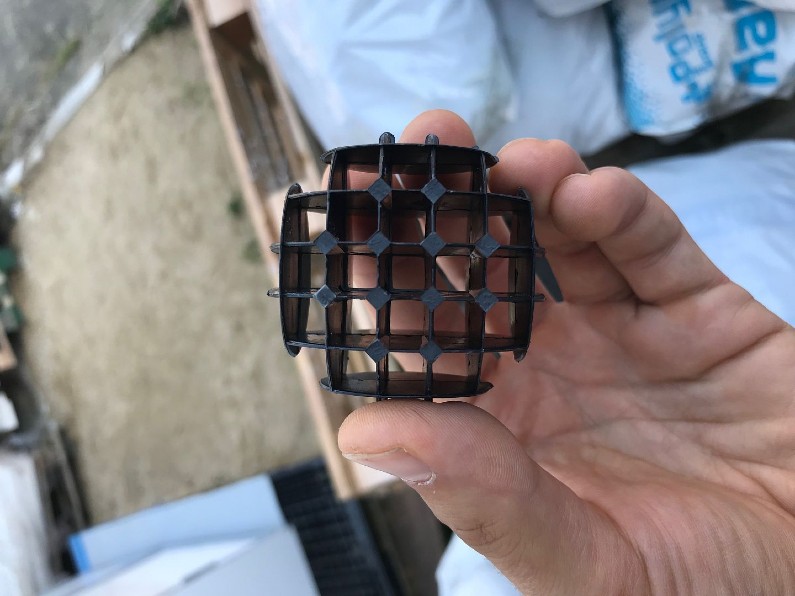
What to do with the water from the wastewater treatment plant?
The treated water is allowed to run off into surface water, seep into groundwater, used for watering the garden or discharged into the sewer. It is up to you to decide what to do with the treated water.
Implementation of a wastewater treatment plant
Because it is a water works, you must have a design for the sewage treatment plant and obtain a sewage treatment plant permit to build it. The actual construction of the sewage treatment plant can then be handled with ease. We start by selecting a suitable site for the wastewater treatment plant. We then excavate the necessary pit and concrete the foundation slab with a curry net. We will then proceed with the installation of the sewage treatment plant. We will not forget to install the necessary sockets for connecting the wastewater treatment plant.
Are you looking for a company to install your wastewater treatment plant? Contact us. With our patented state-of-the-art technology, we proudly rank among the top wastewater treatment companies.
Home sewage purifier maintenance
Now we'll cover how to care for your home sewage purifier. The basics are a regular supply of wastewater so that the bacteria have something to decompose and don't die. If you want to have a home sewage treatment plant in a holiday home, we recommend sewage treatment plants for cottages and cottages, which we have adapted for seasonal operation.
Even sewage treatment plants cannot do without regular maintenance. To keep your home sewage treatment system running smoothly, carry out a regular visual inspection of the entire system, ideally once a week. Look at the level of clogging in the collection basket, the cleanliness of all pipes, if the walls are above the water level and of course check for deposits in the home sewage treatment system.
How to clean a home sewage treatment plant
When you dive into taking care of your purifier, start by cleaning the walls, partitions and overflow edge and removing any buildup. Next, measure the volume of sludge, which you should do about 1×/2 months. Finally, allow the sediment to settle out of the sewage treatment plant and pump it out. Either a small sludge pump will do the trick, or get professionals with a fecal truck. The sludge needs to be removed twice a year.
Regular inspection of your home sewage treatment system will significantly extend its life and reduce the number of faults you would have to deal with. However, please do not hesitate to contact us in case of any problems.
What does not belong in a sewage treatment plant
As the principle of a domestic sewage treatment plant is mechanical-biological treatment, there are certain restrictions on its use. Therefore, strong chemicals or large quantities of common products should not be allowed into the purifier. So what is harmful to the bacteria inside the sewage treatment plant?
- Chlorine-based cleaners, thinners, acids, drugs and other strong chemicals.
- Biocidal products that, while they kill insects and weeds, also kill beneficial bacteria.
- Acidic environments, such as those created by the discharge of waste water from a condensing boiler, or from the excessive use of fats and oils, but which we can remove.
- Regular disposal of food scraps and kitchen waste.
- Non-degradable materials such as nappies, toiletries or wet wipes.
- Large amounts of water, for example when draining a swimming pool or rainwater sump, which would flush out bacteria.
When cleaning, you'll do best to choose home sewage-friendly cleaning products. Such are based on citric acid, natural oils or sugar ingredients. However, you can also use conventional cleaners, just keep an eye on the quantity. For example, 5 washes at a time is considered an inappropriate amount.
If you manage to spill unsuitable substances into the cleaner, don't despair. The bacteria in the sewage treatment plant can usually cope with small amounts. If a larger amount of chemicals crashes, dilute the contents of the purifier with water from, for example, the water sump, or add new bacteria.
How to take further care of the wastewater treatment plant?
A frequently addressed topic is the issue of toilet paper. A domestic sewage treatment plant can also handle this. However, we recommend using unprinted, unperforated paper. A less layered toilet paper made from recycled material will make the job of bacteria even easier.
In addition to cleaning, it is also necessary to take a drain water sample once a year. A qualified person will collect and analyse the water from your domestic wastewater treatment plant. We recommend that you actually carry out the check. If you are found to be deficient, you may be fined. You have 60 days to correct any defects found.
Is your water purifier foaming, have you discovered faults, do you need spare parts or are you bothered by the smell from your water purifier? That's what our service is for. With our years of experience, we'll be happy to help you with your questions, troubleshoot your purifier problems, as well as perform routine maintenance or repairs.
Winterizing a wastewater treatment plant
What about cold temperatures? Winter can be a problematic time because of the colder temperatures. At low temperatures, bacteria stop working, causing the wastewater treatment plant to slow down or stop working altogether. However, in most cases you don't have to worry. Because the water coming from your home is warm enough to keep the purifier running properly, no winterization is needed. However, for seasonally used properties, it is better to insulate the purifier.
Reliable company not only for wastewater treatment plants Morava Ekol
Domestic sewage treatment plants are used for buildings with limited or no access to public sewerage. The purifiers work on a mechanical-biological principle using filters and beneficial bacteria. Thanks to our patented technology, we produce modern, high-quality and, above all, certified wastewater treatment plants. They are suitable for family houses, hotels, restaurants or even seasonally used holiday homes.
We are a supplier and a company for the implementation of domestic wastewater treatment plants. We have been on the Czech market since 1993 and we also supply our products abroad. In addition to sewage treatment plants, septic tanks, separators or plastic manholes, we also offer wellness, skimmer or overflow pools with all pool equipment and accessories. You can also contact us to request a customized pool, custom sump or almost any atypical plastic fabrication.
Rely on a Czech company with many years of experience. Contact us at +420 519 419 525 or e-mail us at info@morava-ekol.eu. We look forward to working with you.








